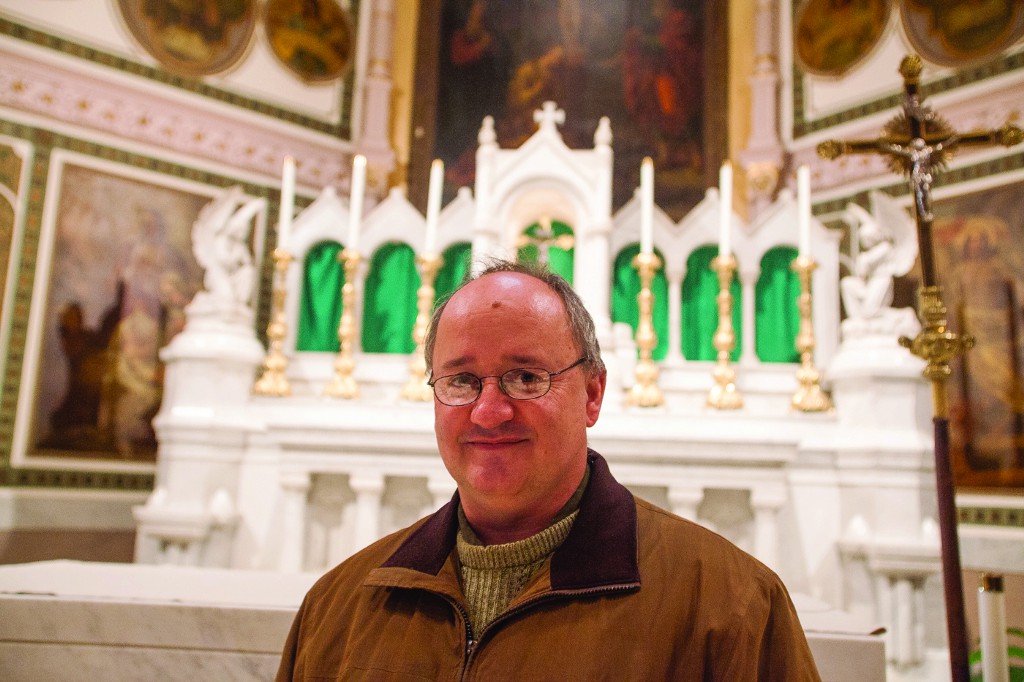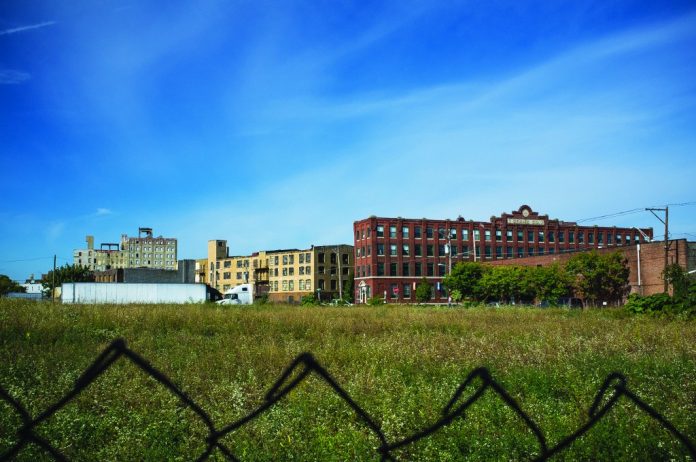West Kensington is shown near the site of the 1844 anti-immigrant riots that are documented in Milano’s book. BRAD LARRISON / FOR THE TIMES
The Nativist movement of the mid-1800s probably helped advance the career of Philadelphia attorney and newspaper editor Lewis C. Levin for a little while, but it all ended in ruin for the prominent anti-immigrant, anti-Irish, anti-Catholic orator.
A son of Jewish parents, the South Carolina native later converted to Christianity, became a Methodist street preacher and moved north.
He was one of the vocal leaders of the Nativists, a fledgling political party whose inflammatory 1844 public rally in the heart of Kensington’s Irish-Catholic community sparked three days of rioting that killed about 25 people and destroyed the original St. Michael’s Roman Catholic Church, among dozens of other neighborhood buildings.
As a result of the riots, the Nativist movement grew in popularity, allowing many of its leaders to win elected offices in both Philadelphia and New York. Levin went on to serve three terms in Congress as the representative from Pennsylvania’s First District. But he lost his re-election bid in 1851.
In 1856, while campaigning against a presidential candidate at Independence Hall, a disturbance erupted and Levin was pulled from the speaker’s platform. Later that year, he was committed to an insane asylum, where he died in 1860.
After his death, one of his daughters married a Spaniard. Both she and Levin’s widow converted to Catholicism.
“That just goes to show, you don’t burn down Catholic churches,” Kensington-based author Ken Milano said during a recent interview.
Levin’s ominous yet perversely humorous tale amounts to a mere snippet of Milano’s recently released historical volume, The Philadelphia Nativist Riots (Irish Kensington Erupts), published by The History Press.
Milano, an unassuming married father of two, studied history at Temple and still lives at a section of the old neighborhood once called “East Kensington,” but now known as Fishtown. Accordingly, the author embraces the familiar and endearing “Kenzo” dialect while lecturing about his latest book at venues like the rebuilt St. Mike’s or Bustleton’s Pennepack Baptist Church, as he did on Oct. 2. The Northeast Philadelphia History Network presented the program.
“I think I’m more of a storyteller than academic lecturer,” he told the Northeast Times after the event. “I’m just a guy from the neighborhood.”
He’s one of the guys if you want to learn about the history of Kensington or surrounding areas. Nativist Riots is his sixth published book. Earlier projects include Hidden History of Kensington and Fishtown, Remembering Kensington and Fishtown, The History of the Kensington Soup Society, The History of Penn Treaty Park and Palmer Cemetery and the Historic Burial Grounds of Kensington and Fishtown. Each is available for $19.99 via www.historypress.net
Milano got his start in 2006 writing weekly columns for the Times’ sister paper, the Star, which serves Port Richmond, Fishtown, Bridesburg and Northern Liberties. Then he created KennethWMilano.com, where he promotes his historical and genealogical research services.
After his weekly columns hit the street in print, he would post them on his personal website. His publishing house — which is based in Charleston, S.C. — found the site and offered to finance a collection of the 800-word essays. Milano said he likes History Press’ format, which allows 50,000 words to go along with 30 to 40 pictures or illustrations. Other publishers are more image-oriented and allow less actual storytelling, he said.
About 10 of his 284 columns for the Star discussed the Kensington riots. He expanded on each of those topics to fill the book’s 160 pages, including appendices, a bibliography and an index for those seeking to research further on their own. Hours of investigation went into each column, so the book is a culmination of countless evenings and weekends in church and public records offices.
“All of this local history stuff is primary research. It’s not like you can go and look it up on the Internet,” Milano said. “Scholars haven’t really focused on Kensington history and wrote about it.”
The section was a self-governing district within Philadelphia County from 1820 to 1854, separate administratively from the city of Philadelphia, and was a world-class industrial center in the 19th century.
“When Philadelphia was a powerhouse of America and the world, industrywise and textilewise, Kensington was half of that,” Milano said.
Yet, the riots, if considered as a group, amounted to perhaps the most significant single event in the neighborhood’s history.
“If you look at the academics, if there’s one thing they did research and write about, it’s the Kensington riots,” Milano said.
Many of the same conflicts that precipitated and sparked the riots persist today: “native” Americans vs. immigrants, Protestants vs. Catholics, the separation of religion and public schools, the socioeconomic divide between the bourgeoisie and the working class.
“It had all of those undertones,” Milano said.
He doesn’t take sides, normally.
“I’m more of a narrative historian. I leave interpretation to the reader, although sometimes I fall out of my paradigm,” he said.
His cheeky analysis about the perils of burning Catholic churches is one such instance, but it’s not without a strong foundation.
For instance, another prominent Nativist and former militia officer, Col. Peter Albright, like Levin, met a similarly gruesome fate years after leading the siege on St. Mike’s.
A native Philadelphian, Albright was baptized at St. Augustine Roman Catholic Church as a child, but “somehow became a bitter enemy of Catholics,” Milano wrote. Albright’s mother was Protestant. In addition to burning St. Mike’s to the ground during the riots, Albright led his followers to Fourth and Vine streets, where they set St. Augustine ablaze. Albright’s baptismal records survived the fire, however.
Three years later, Albright died at age 41 after his bowels exploded in an oyster cellar, Milano said. In 1853, Albright’s brother died in a fire. Three years after that, Albright’s widow and daughter drowned when they were sledding on the frozen Delaware River and the ice broke. ••
On the Web:
Visit the Northeast Times channel on YouTube.com to view author Ken Milano’s Oct. 2 discussion of the Nativist Riots for the Northeast Philadelphia History Network.

Words of wisdom: Author Ken Milano, author of The Philadelphia Nativist Riots (Irish Kensington Erupts), stands inside St. Michaels Church at 2nd and Jefferson streets. BRAD LARRISON / FOR THE TIMES





